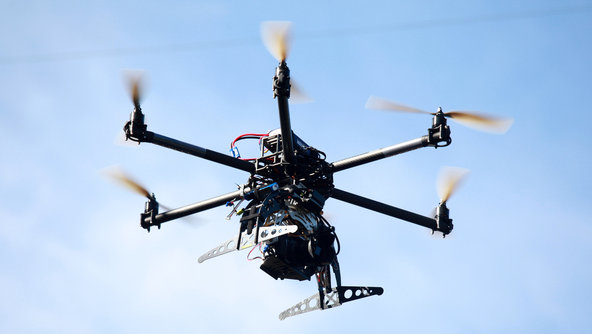I know that you all were wondering, "I wonder what the official OHSAA policy is for drones", well... wonder no more!!
OHSAA Drone Policy
"The presence of a drone is an Administrative issue for the school, NOT something for an official to deal with. That is not to make light of the safety issues at all, just not within the jurisdiction of an official. And, aside from the ball striking a drone (which IS definitely another issue related to re-start, etc), any official that encounters a drone during a regular season game simply has to assume the school's policy PERMITS them. Simple as that."
Here is the OHSAA's Drone policy for tournaments:
- Drones (Unmanned Aerial Vehicles)
The use of drones is prohibited for any purpose by any persons at OHSAA tournament contests. Tournament management shall remove anyone attempting to use a drone and/or confiscate the drone until the event has been completed.
Note: An exception to this policy may be made in specific cases for OHSAA broadcast partners, provided the management of the tournament facility permits the presence of droned for broadcast purposes under the control of the OHSAA.
As officials, we must follow the OHSAA Policy, as fleshed out by Jerry's preceding remarks. Thank you.
Now, what to do if the head referee determines that the drone is interfering with the match? Contact the home site administrator to have the situation rectified, as only the home school's representative can deal with this situation. This same procedure should be followed to address any safety concerns, as indicated in Jerry's remarks preceding the Policy, above.
If the ball should contact a drone, which is over the field, i.e., the ball is in play at the time that it contacts the drone; play shall be restarted with a drop ball at the spot on the field directly below that contact, subject to the special considerations of NF 9.2.2.
NF 9.2.1(c) The game is restarted with a drop ball: (c) following a temporary suspension of play for an injury or unusual situation in which no team has clear possession of the ball (except as noted in 14.1.7);
That there was no clear possession in either side which would warrant an indirect free kick, is borne out by 9.2.1 Situation A (1981): The ball is being played by A2 in Team B's penalty area. B2 takes the ball away from A2 and kicks it to midfield. At the beginning of play, B3 had been hurt in the penalty area and appears to have a broken leg. The official sounds the whistle as B2 clears the ball from the penalty area. Following suspension of play, the official is about to put the ball in play by a drop ball just outside the penalty area when player B2 protests claiming they were in control of the ball when kicked from the penalty area. RULING: When the ball was cleared there was no assurance as to which team would control the ball when it was next played. A drop ball should be given. (9.3)
NF 9.2.2 The ball should be dropped at the location where it became dead unless this is within the goal area, in which case, it shall be dropped on that part of the goal-area line which runs parallel to the goal line nearest the location where the ball was when play was stopped. If the ball was caused to go out of bounds by two opponents simultaneously, the ball is dropped five yards inside the boundary line unless this is the goal area. (Also see 9.3.)
NF 9.3 In case of a temporary suspension due to an injury or any unusual situation, (except as noted in 2.2.4) if one team is clearly in possession of the ball, the game shall be restarted by an indirect free kick by the team in possession of the ball at the point where the ball was when play was suspended (except as noted in 14.1.7). Should there not be clear possession at the time play is suspended due to an injury or any unusual situation, there will be a drop ball at the spot where the ball was declared dead subject to the provisions of Rule 9.2.2.


Nice Pic !!!